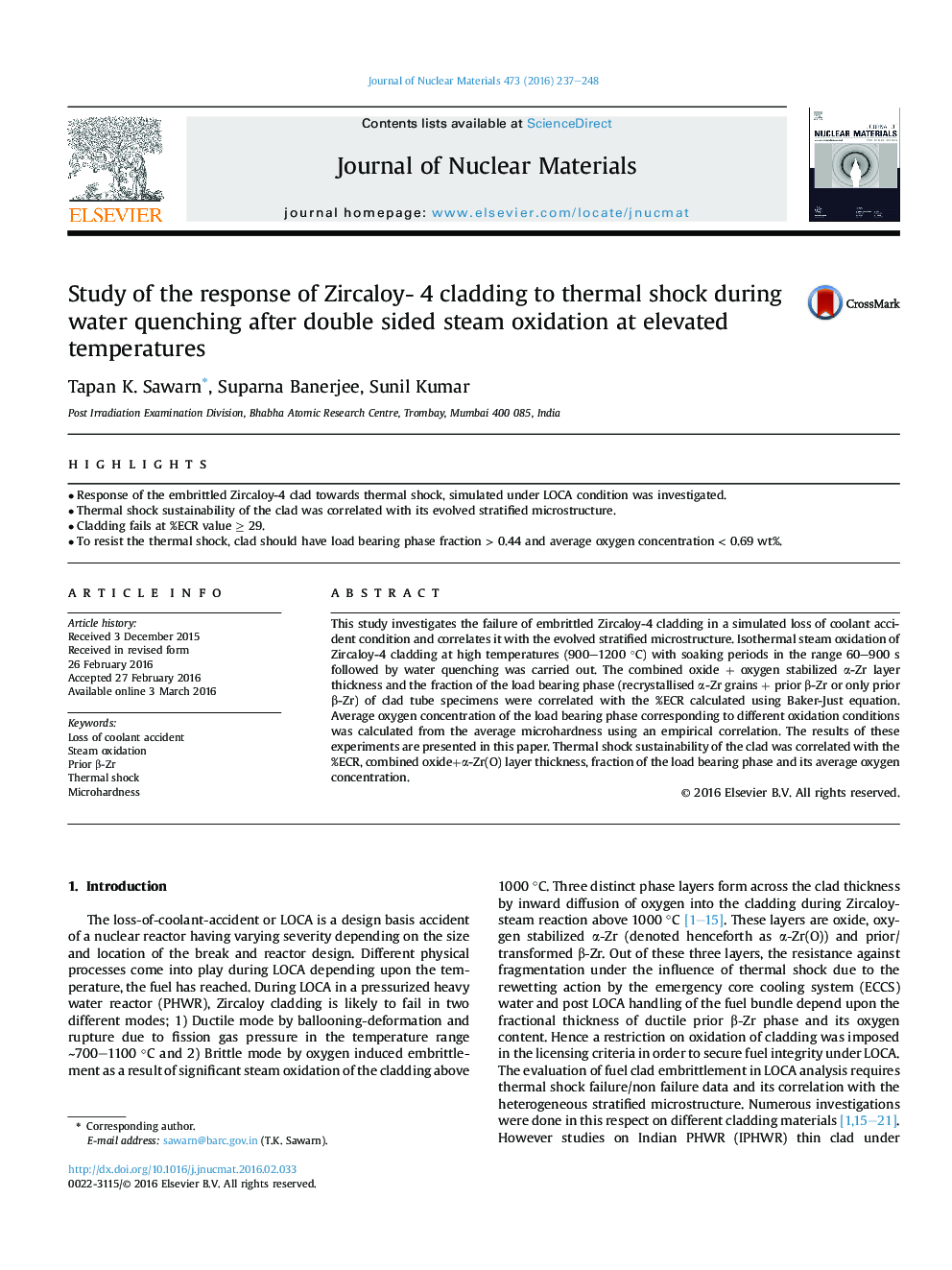| Article ID | Journal | Published Year | Pages | File Type |
|---|---|---|---|---|
| 7964482 | Journal of Nuclear Materials | 2016 | 12 Pages |
Abstract
This study investigates the failure of embrittled Zircaloy-4 cladding in a simulated loss of coolant accident condition and correlates it with the evolved stratified microstructure. Isothermal steam oxidation of Zircaloy-4 cladding at high temperatures (900-1200 °C) with soaking periods in the range 60-900 s followed by water quenching was carried out. The combined oxide + oxygen stabilized α-Zr layer thickness and the fraction of the load bearing phase (recrystallised α-Zr grains + prior β-Zr or only prior β-Zr) of clad tube specimens were correlated with the %ECR calculated using Baker-Just equation. Average oxygen concentration of the load bearing phase corresponding to different oxidation conditions was calculated from the average microhardness using an empirical correlation. The results of these experiments are presented in this paper. Thermal shock sustainability of the clad was correlated with the %ECR, combined oxide+α-Zr(O) layer thickness, fraction of the load bearing phase and its average oxygen concentration.
Related Topics
Physical Sciences and Engineering
Energy
Nuclear Energy and Engineering
Authors
Tapan K. Sawarn, Suparna Banerjee, Sunil Kumar,
